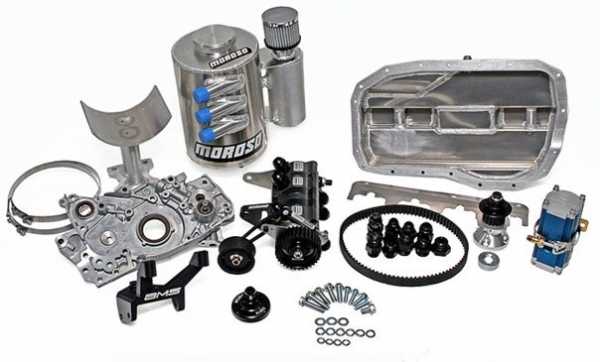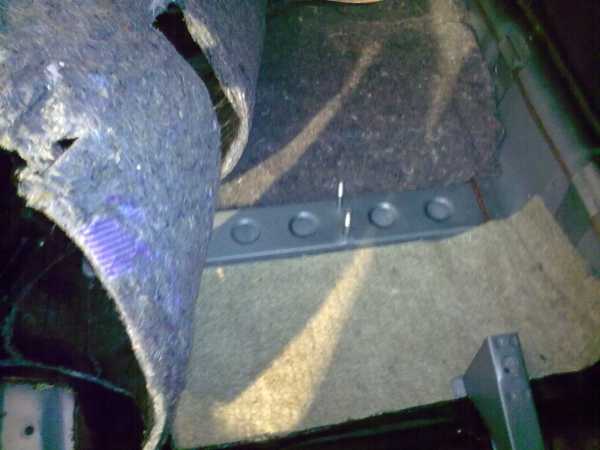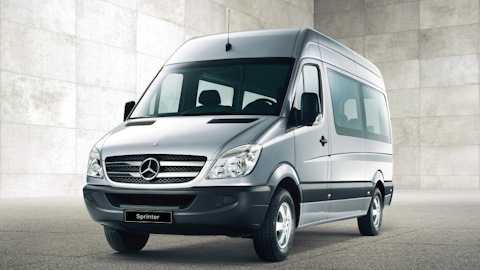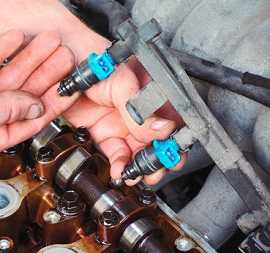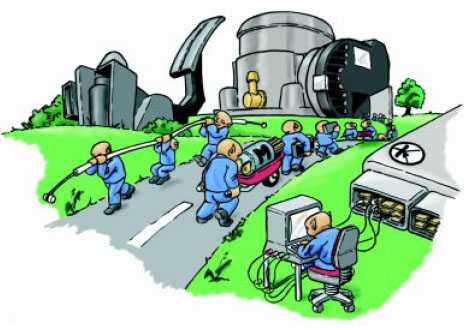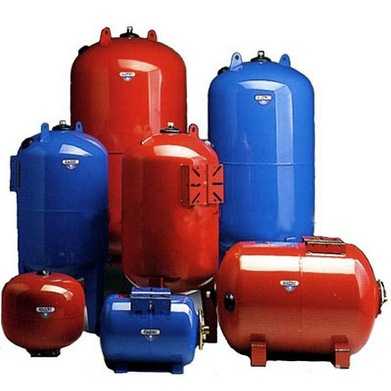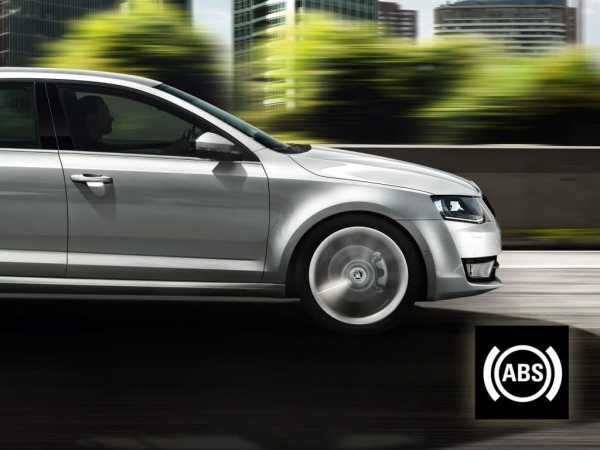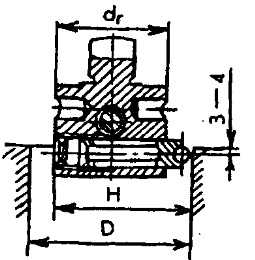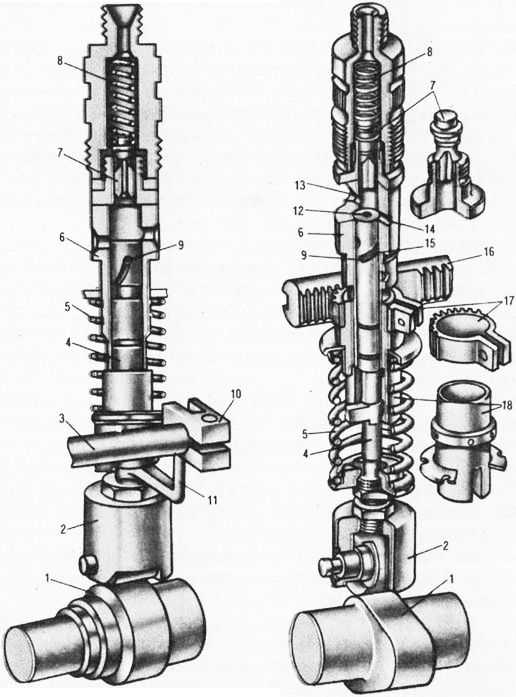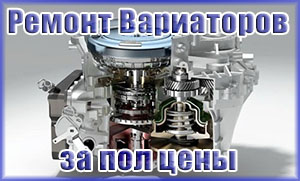Dodge charger 2017
2017 Dodge Charger – характеристики и обзор
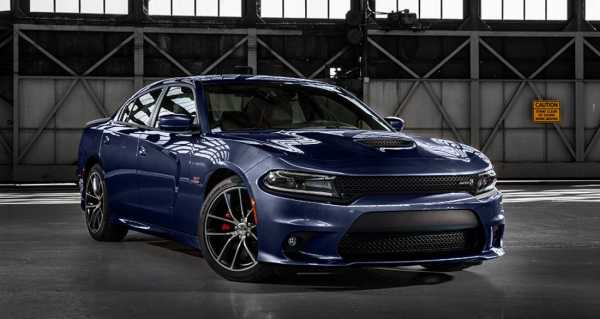
Обзор модельного ряда 2017 года: новое в модели, краткое описание, характеристики модельного ряда, мнения экспертов, безопасность.
Как уже упоминалось в этой статье, Dodge Charger в 2017 году имеет 8 вариантов.
Новое в 2017 году
Dodge Charger в этом году получил новейшее поколение мультимедийного интерфейса UConnect от FCA, в котором теперь есть Apple CarPlay и Android Auto.
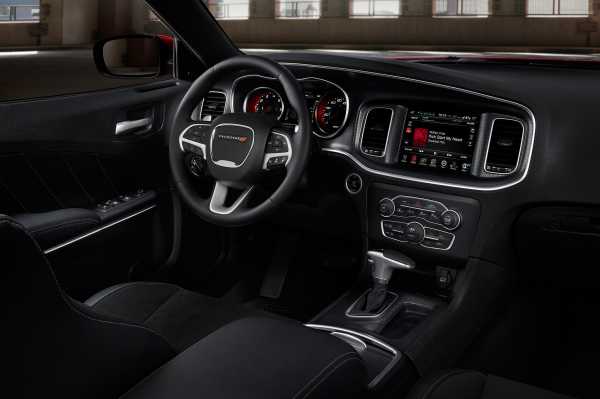
Все модели, оснащенные дополнительным 5,7-литровым двигателем V-8, теперь поставляются в стандартной комплектации с активной выхлопной системой.
Dodge также выпустил модель Charger Daytona, и ее можно приобрести либо с 5,7-литровым, либо с 6,4-литровым (от модели 392) двигателями V-6.
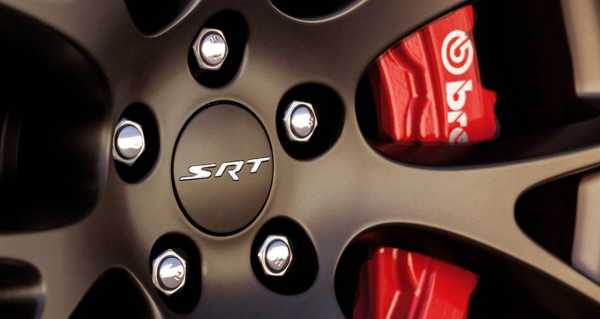
Все модели Daytona поставляются с дизайном экстерьера, взятым от Charger Hellcat, тормозами Brembo, алюминиевыми колесами диаметром 20 дюймов (50,8 см.) и спортивными сидениями.

Модели SRT теперь выпускаются в стандартной комплектации с более легкими 20-дюймовыми легкосплавными дисками, отличительными значками, чтобы отличить стандартный Charger SRT от Hellcat, и рулевым колесом со светодиодной подсветкой белого цвета (SRT 392) или красного (Hellcat).
Предупреждение о слепом месте и предупреждение о заднем поперечном пути стало стандартным для SRT 392.
Добавлено четыре новых цвета кузова: Green Go, Yellow Jacket, Grey Destroyer и Octane Red.

Цвет Green Go

Цвет Yellow Jacket
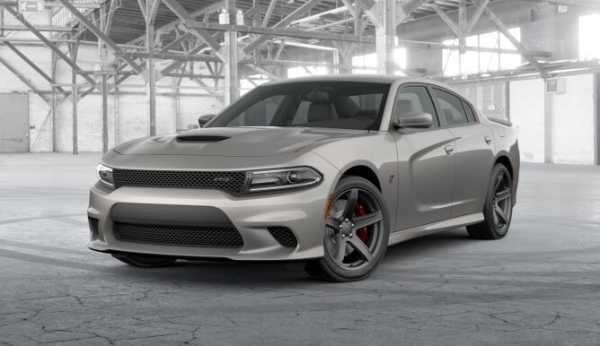
Цвет Grey Destroyer
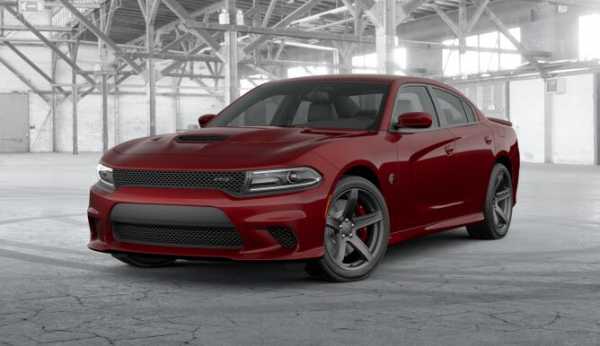
Цвет Octane Red
Новый 19-дюймовый легкосплавный диск, отделанный в глянцевом черном цвете, был добавлен в группу Rallye для всех вариантов Charger SXT с приводом на все колеса.

Краткое описание автомобиля
Dodge Charger — полноразмерный заднеприводный (RWD) или полноприводный (AWD) седан. Предлагается несколько вариантов модели, включая SRT Hellcat с 707 л.с.
Обзор
В 2017 Dodge Charger есть четыре варианта двигателя и все идут в паре исключительно с восьмиступенчатой автоматической коробкой передач.
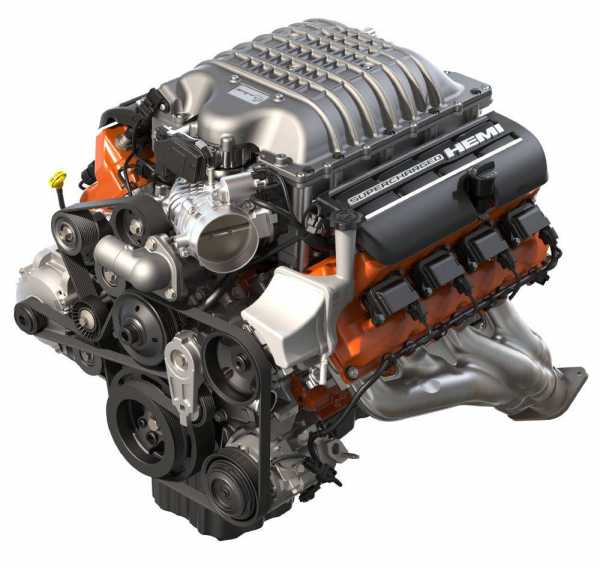
SUPERCHARGED 6.2L HEMI® SRT HELLCAT V8 ENGINE (707 л.с.)
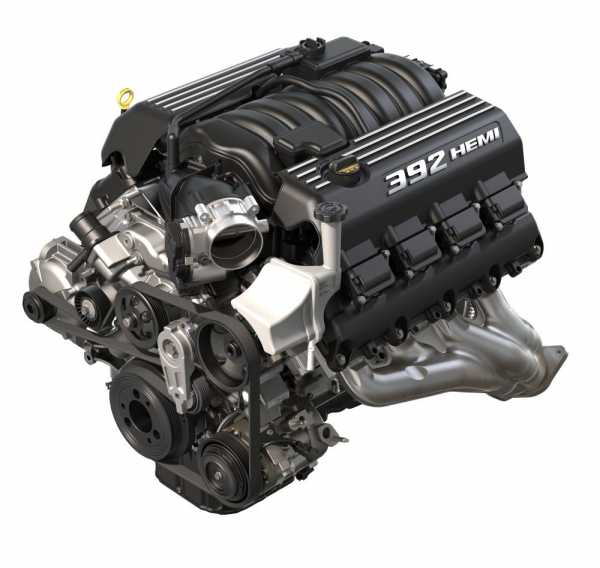
392 HEMI® V8 ENGINE (485 л.с.)
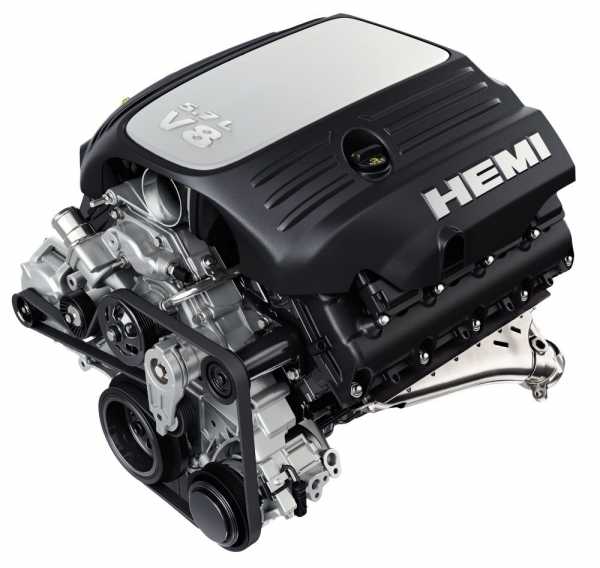
5.7L HEMI® V8 ENGINE (370 л.с.)

3.6L PENTASTAR® V6 ENGINE (300 л.с.)
Модель: Charger SE, Charger SXT
Двигатель 3,6-литровый V-6, трансмиссия восьмиступенчатая автоматическая.
Мощность: 292-300 л.с./352,5-357,9 N·m крутящего момента
Расход топлива: 14,9л./9,4л.(город/шоссе), задний привод, RWD); 15,7л./10,5л. на 100 км. (полный привод, AWD).
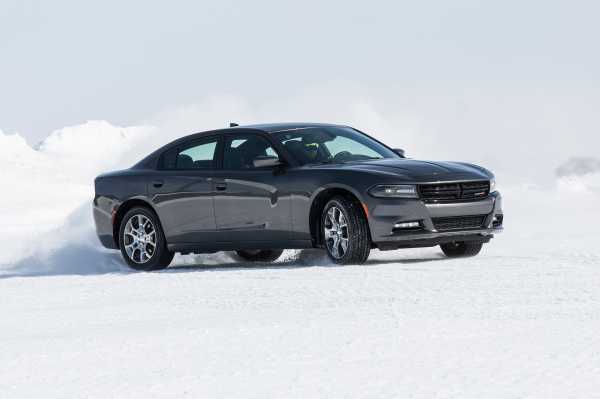
Charger SXT AWD
Модель: Charger R/T, Charger Daytona
Двигатель 5.7-литровый V-8, трансмиссия восьмиступенчатая автоматическая.
Мощность: 370 л.с./535,5 N·m
Расход топлива: 17,7л./11,3л. на 100 км.
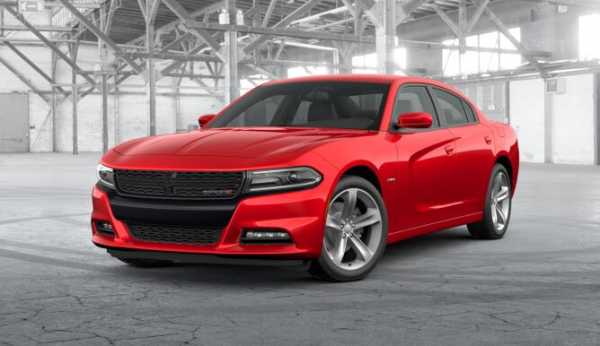
Charger R/T
Модель: Charger R/T Scat Pack, Charger Daytona 392, Charger SRT 392
Двигатель 6.4-литровый V-8, трансмиссия восьмиступенчатая автоматическая
Мощность: 485 л.с./644 N·m
Расход топлива: 18,8/11,3л. на 100 км.
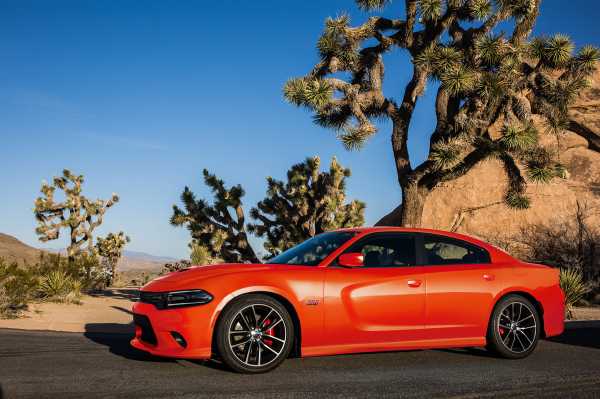
Charger R/T Scat Pack
Модель: Charger SRT Hellcat
Двигатель 6.2-литровый V-8 с наддувом, трансммиссия восьмиступенчатая автоматическая.
Мощность: 707 л.с./881,3 N·m.
Расход топлива: 21,7л./12,8л. на 100 км.
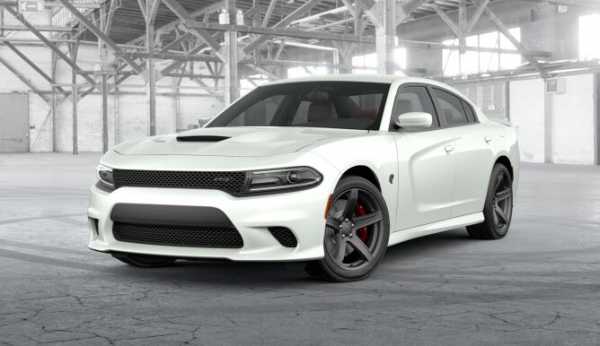
Разгон от 0 до 100 км/ч: SRT и SRT Hellcat за 3,4 секунды, остальные модели за 6,2 секунды.
Доступные функции включают новейшую информационно-развлекательную систему FCA UConnect, камеру заднего вида, фары HID со светодиодными акцентами, аудиосистему Harman/Kardon, вход/запуск без ключа и дистанционный запуск.
В классе SXT Super Track Pak добавляются 20-дюймовые легкосплавные диски, покрытые всесезонными шинами, 3.07 отношение осей заднего моста, 3-х модельная электронная система контроля устойчивости, высокопроизводительные тормоза, страницы эффективности Dodge (Dodge’s Performance Pages) и настройку характеристики подвески, которая опускает седан на полдюйма.
В Charger есть 467 литров багажного отделения, и его можно расширить за счет стандартных задних сидений 60/40 с раздельным складыванием.
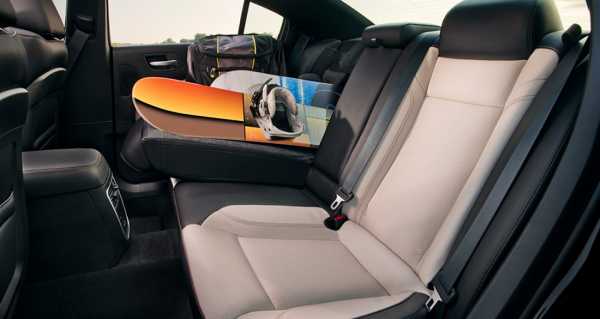
Мнения экспертов
В 2016 году первый тест показал, что Charger, рассчитанный на двигатель V-6, более спокойный и ориентированный на семью. Ускорение хорошее, но вес автомобиля в более чем 1860 кг. (4100 фунтов) означает, что двигатель чувствует себя время от времени напряженным.
С другой стороны, управление автомобилем четкое и безопасное благодаря сильным тормозам, отличному сцеплению и резкому управлению.
Кроме того, кабина также хорошо изолирована, но внутри нее имеются некоторые некачественные пластмассы, которые отставляют не очень приятный осадок в отличии от общего хорошего качества интерьера.
С другой стороны, информационно-развлекательная система FCA от Uconnect достаточно проста в использовании.
Charger SRT Hellcat с 707 л.с. быстро ускоряется.
SRT Hellcat может легко продаватся в качестве серийного варианта, но шины автомобиля, не позволяют ему эффективно подавать свою мощность через задние колеса и ехать строго по прямой линии.
Безопасность
NHTSA предоставило 2017 Dodge Charger пятизвездочный общий рейтинг безопасности (из возможных пяти звезд).
2017 Dodge Charger получил вторую по величине оценку в оценке аварийных ситуаций и наивысший балл Good для оставшихся оценок (умеренное перекрытие спереди, сбоку, крыша, подголовники и сиденья).
Седан получил высший рейтинг в тесте IIHS по предупреждению столкновения с передней частью, где он избежал столкновения с ездой в 19,3 км/ч (12 миль в час), и понизил тяжесть воздействия при езде в 40,2 км/ч (25 миль в час) (урон как при езде 19,3 км/ч).
Доступный Technology group на всех моделях, кроме базового SE и SRT Hellcat, добавляет активные функции безопасности, такие как предупреждение о предстоящем столкновении, автоматическое аварийное торможение, предупреждение о выходе из полосы движения и помощь при удержании полосы.
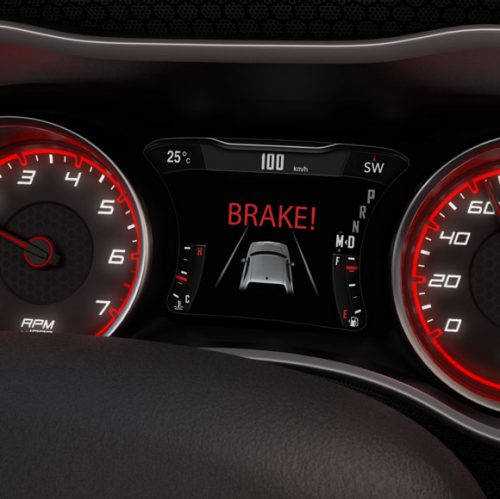
Интересный факт
Согласно Доджу, Charger SRT Hellcat имеет максимальную скорость 328,3 км/ч (204 миль в час).
2017 Dodge Charger Information
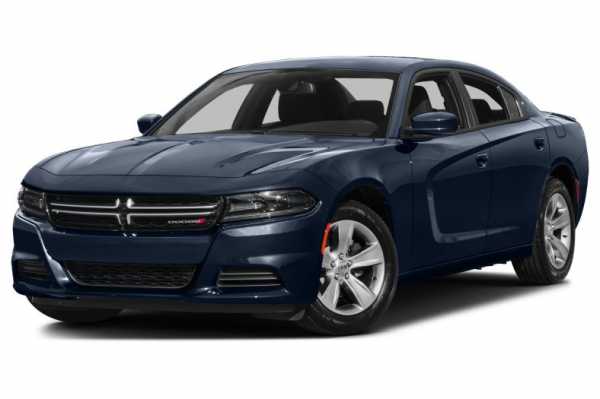 Photos The Dodge Charger rear-wheel-drive sedan is about the closest thing America has to an old-school muscle car, while now being comfortable and user friendly, with modern technology.
Photos The Dodge Charger rear-wheel-drive sedan is about the closest thing America has to an old-school muscle car, while now being comfortable and user friendly, with modern technology. For 2015, it was refreshed at every body panel except the roof and rear doors, but its design remains retro as intended. The 2017 Charger upgrades the infotainment system with an improved touchscreen with Apple CarPlay and Android Auto. New wheels and retro hound's-tooth upholstery are also available on 2017 Dodge Chargers.
Base engine is a responsive 3.6-liter V6 making 292 horsepower, followed by a 5.7-liter V8 making 370 horsepower, a 6.4-liter V8 making 485 hp, and last but clearly not least is the horsepower king, the SRT Hellcat, a supercharged 6.2-liter V8 making 707 humongous horsepower. It will go 204 miles per hour. It's surprisingly composed for a beast.
Charger V6 models use an 8-speed automatic, and have available all-wheel drive. Acceleration is quick enough to stay ahead of traffic.
Charger V8 versions, also with an 8-speed automatic, bring enough acceleration to enable relaxed passing at just half throttle.
The base models are beautifully finished for the money, but if it's luxury you need, maybe you should look at the Chrysler 300, which shares the Charger platform and powertrains.
Fuel economy for the Charger V6 with rear-wheel drive is an EPA-estimated 19/30 miles per gallon City/Highway, or 23 mpg Combined. V8 models with cylinder deactivation get 19 mpg EPA Combined, while the Hellcat gets 16 mpg Combined.
The Charger gets five stars in safety from NHTSA, while the IIHS gives it the highest score in every category, including rollover and side impact, but a Marginal in the small front-overlap crash test. Standard safety features include airbags for the driver's knee and full-length curtain airbags, as well as active head restrains in front. But a rearview camera isn't standard on the base model, only upper trim levels. Features including rear cross-traffic alert, blind-spot monitors, lane departure warning with lane-keep assist, forward collision warning, adaptive cruise control and automatic emergency braking are optional, or come with packages and higher trims. Full Review
The Dodge Charger rear-wheel-drive sedan is about the closest thing America has to an old-school muscle car, while now being comfortable and user friendly, with modern technology.For 2015, it was refreshed at every body panel except the roof and rear doors, but its design remains retro as intended. The 2017 Charger upgrades the infotainment system with an improved touchscreen with Apple CarPlay and Android Auto. New wheels and retro hound's-tooth upholstery are also available on 2017 Dodge Chargers.
Base engine is a responsive 3.6-liter V6 making 292 horsepower, followed by a 5.7-liter V8 making 370 horsepower, a 6.4-liter V8 making 485 hp, and last but clearly not least is the horsepower king, the SRT Hellcat, a supercharged 6.2-liter V8 making 707 humongous horsepower. It will go 204 miles per hour. It's surprisingly composed for a beast.
Charger V6 models use an 8-speed automatic, and have available all-wheel drive. Acceleration is quick enough to stay ahead of traffic.
Charger V8 versions, also with an 8-speed automatic, bring enough acceleration to enable relaxed passing at just half throttle.
The base models are beautifully finished for the money, but if it's luxury you need, maybe you should look at the Chrysler 300, which shares the Charger platform and powertrains.
Fuel economy for the Charger V6 with rear-wheel drive is an EPA-estimated 19/30 miles per gallon City/Highway, or 23 mpg Combined. V8 models with cylinder deactivation get 19 mpg EPA Combined, while the Hellcat gets 16 mpg Combined.
The Charger gets five stars in safety from NHTSA, while the IIHS gives it the highest score in every category, including rollover and side impact, but a Marginal in the small front-overlap crash test. Standard safety features include airbags for the driver's knee and full-length curtain airbags, as well as active head restrains in front. But a rearview camera isn't standard on the base model, only upper trim levels. Features including rear cross-traffic alert, blind-spot monitors, lane departure warning with lane-keep assist, forward collision warning, adaptive cruise control and automatic emergency braking are optional, or come with packages and higher trims. Hide Full Review
Choose a Trim 4dr Rear-wheel Drive Sedan (SE) 4dr Rear-wheel Drive Sedan (SXT) 4dr All-wheel Drive Sedan (SE) 4dr All-wheel Drive Sedan (SXT) 4dr Rear-wheel Drive Sedan (R/T) 4dr Rear-wheel Drive Sedan (R/T 392) 4dr Rear-wheel Drive Sedan (SRT 392) 4dr Rear-wheel Drive Sedan (SRT Hellcat)
$27,995 - $65,945 MSRP / Window Sticker Price
NA Nat'l avg. savings off MSRP
| Engine | 3.6LV-6 |
| MPG | 19 City / 30 Hwy |
| Seating | 5 Passengers |
| Transmission | 8-spd w/OD |
| Power | 292 @ 6350 rpm |
| Drivetrain | rear-wheel |
!function(f, b, e, v, n, t, s) { if (f.fbq) return; n = f.fbq = function() {n.callMethod ? n.callMethod.apply(n, arguments) : n.queue.push(arguments)}; if (!f._fbq) f._fbq = n; n.push = n; n.loaded = !0; n.version = '2.0'; n.queue = []; t = b.createElement(e); t.async = !0; t.src = v; s = b.getElementsByTagName(e)[0]; s.parentNode.insertBefore(t, s)}(window, document, 'script', '//connect.facebook.net/en_US/fbevents.js'); fbq('init', '174181139752304'); fbq('track', 'PageView'); fbq('trackCustom', 'ViewedVehicle', {year: '2017', make: 'Dodge', model: 'Charger', trim: 'SE 4dr Rear-wheel Drive Sedan'});>
(function(i,s,o,g,r,a,m){i['GoogleAnalyticsObject']=r;i[r]=i[r]||function(){(i[r].q=i[r].q||[]).push(arguments)},i[r].l=1*new Date();a=s.createElement(o), m=s.getElementsByTagName(o)[0];a.async=1;a.src=g;m.parentNode.insertBefore(a,m)})(window,document,'script','//www.google-analytics.com/analytics.js','ga'); ga('create', 'UA-71479133-1', 'auto'); ga('set', 'anonymizeIp', true); ga('set', 'dimension1', '2017'); ga('set', 'dimension2', 'Dodge'); ga('set', 'dimension3', 'Charger'); ga('set', 'dimension7', 'utility'); ga('set', 'dimension8', 'make-model'); ga('set', 'dimension9', 'overview'); ga('set', 'dimension10', 'Sedan||Intermediate');ga('send', 'pageview');>
(function(d, t) {var a = d.createElement(t), s = d.getElementsByTagName(t)[0]; a.src = 'https://o.aolcdn.com/ads/adsWrapper.js'; s.parentNode.insertBefore(a, s);}(document, 'script'));>
(function(d, t) {var a = d.createElement(t), s = d.getElementsByTagName(t)[0]; a.src = 'https://cdn.flipboard.com/web/buttons/js/flbuttons.min.js'; s.parentNode.insertBefore(a, s);}(document, 'script'));>
2017 Dodge Charger Accessories & Parts
Ultimate Indoor Protection
The Right Towing Solution
Where Technology & Protection Meet
The Dodge Charger has been a quintessential American muscle car since its inception far back in 1966. Today's version perhaps bears the strongest resemblance to a renowned old-school muscle car, but delivers much more comfort and is equipped with modern technologies that make it more user-friendly. The most significant changes the Charger has got for the 2017 model year are lightweight forged wheels (offered for the SRT Hellcat), an all-new active exhaust system (available for Chargers powered by a 5.7 L V8), and improved 8.4-inch Uconnect touchscreen. The 2017 Charger is offered in eight trims: SE, SXT, SRT 392, R/T, Daytona, R/T Scat Pack, Daytona 392, and SRT Hellcat. Like before, all Charger models are rear-wheel drive. For fans of all-wheel drive, the automaker offers it as an option for the Charger SE and SXT.
The car comes standard with a 3.6 L V6 engine generating 292 HP. Other engine options are a 5.7 L V8 that is capable of 370 HP, 6.4 L V8 that offers 485 HP, and supercharged 6.2 L V8 generating 707 HP. Every version of the 2017 Charger comes with an eight-speed automatic transmission that ensures quick acceleration. Embodying decades of muscle car building heritage, the Dodge Charger is all about not only unmatched performance, but also safety on the road. For the 2017 model year, the car got traction and stability control, an airbag package, and antilock brakes. All mentioned features are standard, while a great number of other up-to-date safety technologies like forward collision warning are optional.
The interior of the car is all about style and sophisticated technologies. The total interior space measures 104.7 cubic feet, which ensures comfortable seating for five. The rear seats are folding, which allows for customizing the interior depending on cargo and passengers’ requirements. All 2017 Dodge Charger accessories and parts are perfectly blended to provide the performance and comfort everyone expects from this admired car. Although, even the most durable components require replacement due to wear and tear from time to time. In our selection of 2017 Dodge Charger parts and accessories, you will find thousands of products built especially for your vehicle to guarantee a precise fit, while delivering OEM-like quality and operation. Whatever 2017 Dodge Charger accessories and parts you are looking for, we have you covered!
Want to make your 2017 Dodge Charger one of a kind, keep it running at its peak, or turn it into a high-powered beast? Our vast selection of premium accessories and parts ticks all the boxes. Quality is at the heart of everything we do at CARiD, so whatever your project, our brand name products and qualified experts will ensure success. Class. Luxury. Durability. We have it all, and we're always here with everything you need to keep your 2017 Dodge Charger in tip top shape, inside and out.
2017 Dodge Charger - For every turn, there's cars.com.
Editor's note: This review was written in September 2016 for the 2016 Dodge Charger SRT Hellcat. Nothing has changed for 2017, but to see a side-by-side comparison of the two model years, click here.
By now, the automotive world is familiar with the phenomenon known as the Hellcat. It’s the top trim for Dodge’s two muscle cars, the Charger sedan and Challenger coupe. More specifically, it’s the higher of two SRT performance-brand trim levels of both cars. SRT stands for Street and Racing Technology, and it can be thought of as Dodge’s in-house tuner organization, taking cars that are already quick and turning them into high-performance machines.
For Hellcat models, that includes something unique: a 707-horsepower, supercharged 6.2-liter V-8 engine — the most powerful production motor ever offered for sale by an American automaker. The fact that it’s found its way into a full-size family sedan like the Dodge Charger is remarkable — and the fact that you can buy one for around $68,000 is even more amazing.
For 2016, there haven’t been many changes other than a price increase (compare the 2015 and 2016 models side by side here). I put nearly 1,000 miles on a “Go Mango,” bright orange Charger Hellcat over two weeks to see if the reality of driving this thing every day could live up to the mystique surrounding it.
Exterior & Styling
You’ll never lose your Go Mango Charger SRT Hellcat in a parking lot. It stands out like a rescue flare at sea, a beacon of eye-searing color and aggressive attitude in a beige ocean of Camrys.
The regular Charger is already an attractive car, and the SRT treatment makes it even more menacing, with big, 20-inch matte black wheels and a lowered stance. The Hellcat trim also gets a special lower bumper with larger air intakes for cooling purposes, plus functional hood scoops and vents that also serve to help the big engine breathe better. There are LED daytime running lights in the low nose up front that match the LED “racetrack” taillights out back — a distinctive Dodge look that’s instantly identifiable from a quarter-mile away in the dark.
The only indications that this is something more than a Charger SRT 392 are the aforementioned hood and grille, plus the subtle Hellcat logo badges on the fenders. Once auto aficionados around you notice those little kitties, their eyes get wider and a grin inevitably follows; next thing you know, people will be letting you pull into traffic ahead of them while they wait for you. Waves, thumbs-ups, nods, hoots and hollers may also be delivered. Anyone who likes cars knows what a Hellcat is, and it commands instant respect wherever it goes.
How It Drives
That respect is not undeserved. Under the Hellcat’s shapely hood is a beast of a motor, one that lets you know it’s not screwing around the moment you press the starter button — or, better yet, once you use the remote start on a cold morning while you stand behind the car; chances are you’ve never heard an engine this loud outside of a NASCAR event. It fires to life with a roar that can set off nearby car alarms in a crowded parking garage (tested and proven by yours truly). The electronic exhaust seems to be set to fully open when the car is cold; after about 60 seconds of this treatment, it settles down into a more muted, rumbling idle.
If that initial blast is meant as a warning to the driver of the Hellcat’s potential, ignoring it comes at your own risk. Press the throttle at any speed, at any rpm, and you’re rewarded with thrust like being shot out of a cannon. Even a light application of throttle results in considerable speed; flooring it makes the Hellcat gather itself together for half a second before squatting on its haunches and blasting you forward with a noise that’s almost indescribable. First, there’s a mechanical shriek from a twin-scroll supercharger that seems tuned to be intentionally loud (but still makes you grin). The second noise emanates from the fully open exhaust butterfly valves, which produce a shockwave blast like a foghorn among a field of flutes. If you’re behind a Hellcat on the highway and the driver decides to floor it, you’ll wince at the aural onslaught even if your windows are closed. It’s that loud.
And it’s that fast. Our own testing of a Dodge Charger SRT Hellcat produced an astonishing drag-strip quarter-mile time of 11.03 seconds at 126.61 mph on stock tires. It can do that all day long, straight from a showroom floor. On the street, though, the Hellcat is surprisingly docile. It may be intimidating to know that all that power is just a stab away, but you could drive one around town as calmly as you please, never knowing there was anything other than a lazy V-8 loping away under the hood.
The ride is surprisingly compliant for a lowered car with 20-inch wheels and super low-profile tires, but it can be stiffened up via an electronic slider on the Charger’s Performance Pages multimedia screen. The steering, however, can’t be; you can get adjustable power steering assist on SRT 392 models, but the Hellcat doesn’t have that option. Its steering isn’t so great, with little in the way of feedback or required effort. The brakes are a better story: big, six-piston Brembo-brand calipers up front and four-piston rears that stop the heavy sedan with a firm, confident feel.
The Hellcat is a boulevard cruiser and a dragstrip warrior. At a circuit track, it’s out of its element due to its weight and family-sedan roots. On the street, however, the experience is pure dynamite. It’s a muscle car in the purest sense of the name, far more akin to the sleeper sedans of the 1960s than anything on the road today.
As for fuel economy, the Hellcat is saddled with a $1,700 gas-guzzler tax and requires premium fuel, but its mileage isn’t as bad as you might think. Yes, the car is rated 13/22/16 mpg city/highway/combined, and my nearly two weeks with it netted about 17 mpg. But a highway mileage run performed in economy mode — which softens up the car’s throttle and transmission responses and electronically neuters the engine to “just” 500 hp — returned an observed fuel economy of exactly 22.0 mpg. That’s not bad for traveling about 75 mph for four hours. Yes, it does mean you’ll spend a lot of money on gas for the Hellcat if it’s your daily driver. But aside from pouring that gasoline on a bonfire and lighting it (something we do NOT endorse), I’m hard-pressed to think of a more entertaining way to use a large amount of dino juice.
Interior
The Charger is one of only two remaining full-size American sedans (the imported Chevrolet SS is the other), and it has that traditional American big-car feel inside. It’s wide in there, with a sweeping, sculpted dash that’s covered in some unfortunate faux-metal trim. That and the oversized seats that eat into passenger space are the only real foibles in what’s otherwise a comfortable, roomy, quiet environment that can handle five people with ease.
Outward visibility is excellent, as is front-seat comfort. One issue with this SRT-spec trim, however, is that the bottom portion of the beefy steering wheel is smooth plastic, which is slippery and not easy to grip when turning corners or negotiating a track. It may look cool, but for going fast around corners, the whole wheel should be made of uniformly grippy material.
Ergonomics & Electronics
Front and center in the Charger Hellcat’s dash is the 8.4-inch Uconnect multimedia system, and it remains one of the better ones on the market. It’s due for an update in the next year or so, with more functionality and customizability, but the current one works just fine. Our big complaint with it is that it also encompasses some functions that really should have stand-alone buttons, such as controls for the front seat’s heat and ventilation functions. Navigation works well with voice commands, with a stream-of-speech address input that isn’t the speediest but does tend to get things right on the first try.
Special mention must be made of SRT Performance Pages. Accessed by a dedicated button on the console, Performance Pages comprise a screen full of gauges, meters, setting-change toggles, and even a launch control mode adjustment that allows you to do repeated maximum-thrust drag-strip launches with relative ease. And in case you need to get that launch control mode engaged quickly, there’s a hard button devoted to that, too, right below the SRT button. It’s useful for when someone sneaks up and challenges you at a stoplight … not that we condone that kind of behavior.
Cargo & Storage
Being a full-size American sedan, the Charger SRT Hellcat has a great big trunk, with 16.1 cubic feet of cargo room. The rear seats also fold, creating room for larger and bulkier items. It’s comparable to the space found in a Chevrolet SS, which has 16.4 cubic feet of room on a smaller platform. Both are larger than their German luxury sedan competitors: The BMW M5 has 14.0 cubic feet while the Mercedes-AMG E63 makes do with just 12.9 cubic feet.
To be fair, the Charger is a bit larger overall than those sedans, with a longer wheelbase than any of them, but comparing the Charger to the even larger Mercedes-Benz S-Class or BMW 7 Series wouldn’t be an apt comparison.
Safety
In crash tests by the Insurance Institute for Highway Safety, the Charger earned the top rating of good in all crash tests except the small overlap front test, in which it scored marginal. See the Charger’s results here and results for the large-sedan class here.
The Charger SRT Hellcat has less electronic safety equipment than lesser Charger trims due to a modified front bumper that doesn’t accommodate forward-looking radar. So despite being considerably more expensive than an SRT 392 model, you get no forward collision warning with autonomous emergency braking or distance-keeping cruise control. You can get parking sensors all around, plus a backup camera with blind spot and cross-traffic alert. See all the Charger SRT Hellcat’s equipment here.
See how well the Charger accommodates child-safety seats in our Car Seat Check of the 2015 model, which applies to the 2016 Hellcat.
Value in Its Class
Taken on its own, the Charger SRT Hellcat represents a screaming performance value. It starts — very well-equipped — at $68,740 including destination fee and gas-guzzler tax and already includes everything you need to go extremely fast in comfort: the supercharged Hellcat engine, a Bilstein electronically adjustable suspension, Brembo brakes, leather interior, bi-xenon headlights, heated front and rear seats, and more. Add some premium options, like a Harman Kardon 19-speaker audio system, floor mats, black-painted roof and summer tires, and you’ll reach the $72,830 asking price for my test car. You can keep going if you like, adding a moonroof and racing stripes, but even fully optioned out, the Charger SRT Hellcat doesn’t top $77,000.
Matching up competitors is a little difficult, as the Hellcat engine puts the Charger in a league of its own. The only American competitor is the 415-hp, V-8-powered Chevrolet SS, but that car is more a match for the regular Charger SRT 392 and its 485-hp, 6.4-liter V-8. The SS is considerably lighter and features General Motors’ magnificent Magnetic Ride Control suspension. It can even be had with a manual transmission, but it still gives up almost 300 hp to the Hellcat. On the plus side, the SS costs roughly $20,000 less.
To get capable sport sedans that can almost keep up with the Hellcat, your only other options are luxury cars. The BMW M5 costs a lot more than the Charger SRT Hellcat but comes with handling prowess and interior quality that the Charger can’t match. The same can be said of the Mercedes-AMG E63, a massively powerful, V-8-powered sport sedan with better handling and interior than the Charger — for a lot more money. Compare all four here.
At the end of the day, that’s what makes the Charger SRT Hellcat special. It’s not the wide-eyed, drooling stares of other drivers, or that feeling of being the apex predator on the hunt when out on the streets. It’s the fact that, for the money, absolutely nothing else can produce the power and uniqueness of a Charger SRT Hellcat. It’s the last of a dying breed, but it’s so much fun we can’t help but celebrate its existence.
Hide full review
"Питер - АТ"
ИНН 780703320484
ОГРНИП 313784720500453
